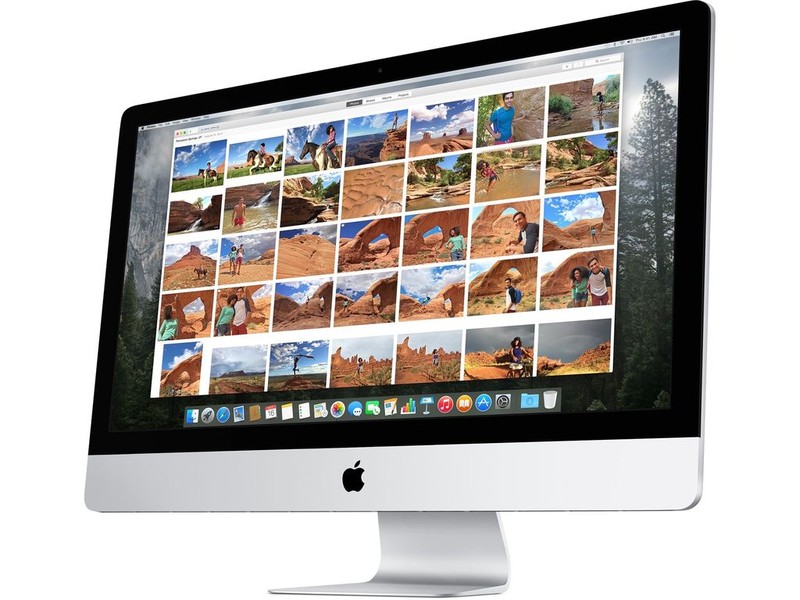 photos-app-imac-press_1024-imore
photos-app-imac-press_1024-imore
When Apple recently released the new Photo.app on OS X, as a long time believer in iPhoto, I was hopeful that they’d addressed shortcomings I’d wrestled with. I think they’ve mostly hit the mark with a small number of concerns. Thus, I begin this discussion by recognizing that the biggest problem related to modern mobile-photography is one of both volume, we’re taking a hell of a lot more photos than ever, and that, beyond an occasional upload to FaceBook, none of us bother to back up or organize this avalanche of photos, that are only one “oops” away from oblivion. If you live in the Apple eco-system, have an iMac or Macbook and one or more iOS devices (iPhone, iPad or Watch), then, by all means, please, please, please set up the Photos.app on your devices and make sure that your images and videos are synced up so if the phone goes boom, the photos are backed up (you are backup up your mac using TimeMachine, right?).
A huge plus is, because of how they’ve connected online syncing, you are no longer limited to the storage size of your device in order to have access to all of your photos. Regardless of the size of your collection, you can view any photo on your 16GB iPhone or 64GB MacBook Air. I can’t tell you how wonderful that seemed to me, because previously I had too many photos for iPhoto and had to break up my collection by years, stored on external hard drives and only the current year/collection was accessible to my iOS devices. Having everything available on any connected device is a big win.
Alas, the biggest real downside with this plan is if you have a large collection of photos, online iCloud storage is expensive. The first 5GBs are free but it quickly goes up from there. The monthly US fees are:
- 20 GB: $0.99
- 200 GB: $3.99
- 500 GB: $9.99
- 1 TB: $19.99
My current photo collection is over 200GB, so, allowing for future expansion, I’d have to go for the 500GB plan that would require an investment of $119.88 a year. That’s a touch steep when 1TB of personal DropBox storage is $99 a year and 1TB on Flickr.com is free. Damn. But, having everything in the Apple/Photos.app ecosystem is so easy, for most users.

2015-05-27 photos.app on iOS-edit_view
One of the things that they definitely got right was any edits or deletions done on any device would sync across all devices, which may not mean anything to the typical user. But for me, given the number of photos I was taking, having to wait until I was on my mac to do basic editing or to get rid of unusable photos was a huge bottleneck that really slowed down whether some photos ever saw the light of day. I still have images from a great trip to Key West that are still waiting to be edited and posted (and I’m really embarrassed that my Orion Launch photos have yet to be worked on). So, thumbs up on the edit and organize anywhere part of the new photos.app.
Alas, one should note that edits done in the photos.app are only viewable in the photos.app. That means that applications that use the “camera roll” to automatically sync, such as dropbox or google drive or flickr, will only show the raw, unedited version of the image. This makes sense because Photos.app is using non-destructive editing, so that the user can always go back to previous unedited versions, so the “camera roll” version is the original with the edits stored in the application database. The work around for those wanting to save the edited versions separately is when editing in photos.app there is an option to manually save the edited image to dropbox, for example. This is way better than the convoluted way syncing edited images was done with iPhoto, but it’s still an extra step.

2015-05-27 photos.app on OSX-album_view
My final concern with Photos.app is one that I have to confess comes from the fact that I’ve been doing this a long time and am used to organizing my collections using files and folders and also that I use my DSLR and other non-iOS devices when I’m taking a lot of images. I don’t think that I’m in the norm and that most users won’t care that organizing images in Photos.app is limited to manually created albums or the “image saved” date. I’m working on a collection of images that goes back to the 1930s, my parents’ early history, and all of the event from then to now and the combination of “image saved” date and manual albums isn’t quite enough for what I’m trying to do. The “Faces” and tags options are nice but still a bit too locked in for my needs. I’m also not sure if image EXIF metadata is preserved when moving images from application to application. But I imagine most users are only dealing with images that they’ve collected since they first bought their device and the biggest concern is having copies of their images stored somewhere else, so if and when the device dies the images won’t die with it.

Photos.app on OSX years view
So, the pluses are that one can have every image in one’s collection available on any connected device and any edits done on any device will be reflected on all devices. making it possible to manage one’s collection on any device. I imagine that those features will be more than enough for those interested to invest in iCloud storage, if that’s needed. The minuses are, if one’s collection is larger than 5GB, as noted, iCloud storage is expensive, edits done in Photos.app required added steps to be accessible outside of the app and one is limited on how one can organize one’s collection/access to image metadata.
For excellent walk-throughs and step-by-step reviews of Photos.app please check out the following iMore and TidBits articles:
- How to use Photos for OS X: The ultimate guide – by iMore
- Review: Photos for OS X takes the stress out of photo management, by iMore
- Photos Everywhere with Lightroom CC and Photos for OS X, by Jeff Carlson/TidBits
Listed below are my previous musings about iPhoto and Apple’s attempts at addressing our mobile photography needs. Enjoy.
- Damn You iPhoto (for iOS)!!!
- iPhoto for iOS Workflow: So Close But Not Quite
- Et Tu, iPhoto?
- When Files & Folders Are Better Than Photostreams











Then, on the same day that I post these thoughts on Apple’s Photos.app, Google blows it all away with their own Google Photos app, which also runs on iOS. Ain’t tech grand. http://www.cnet.com/news/google-photos-launches-today-with-free-unlimited-photos-and-video/